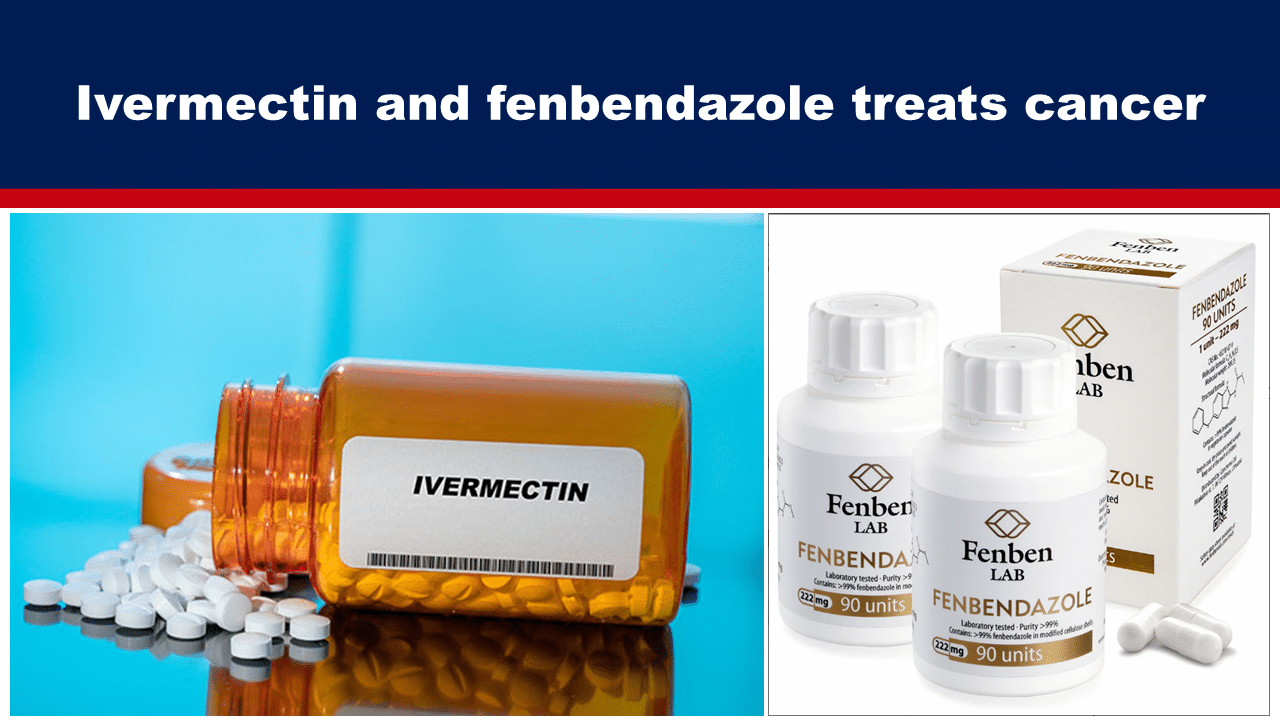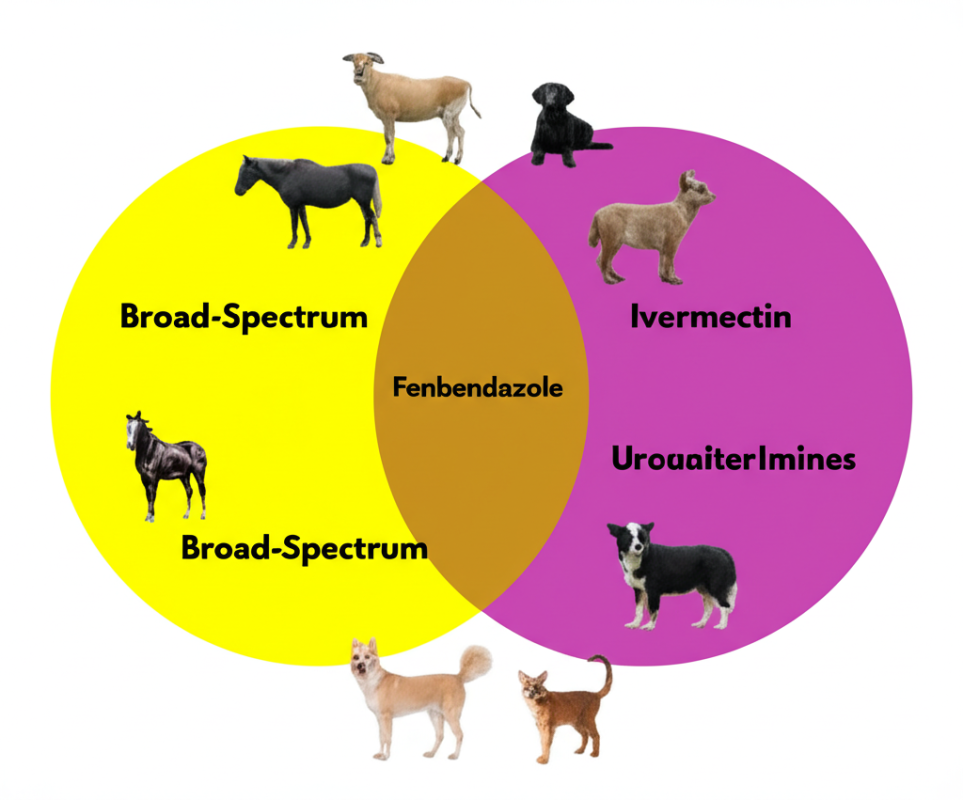Animal Health & Veterinary Care
Fenbendazole and Ivermectin: Your Ultimate Guide to Combined Parasite Control in Animals
Fenbendazole and ivermectin should only be used under the guidance of a licensed veterinarian. Combining these medications without professional supervision can lead to drug interactions, resistance, or health risks. Always follow product labels, local regulations, and professional recommendations. If you’re dealing with human health concerns, consult a physician—these drugs are not approved for all human uses.

Parasites pose a constant threat to pets and livestock, causing everything from mild discomfort to severe health issues like malnutrition and organ damage. Two of the most trusted weapons in the fight against these invaders are fenbendazole and ivermectin. While each is powerful on its own, they can sometimes be used together or in rotation for comprehensive parasite control.
In this ultimate guide, we’ll explore what fenbendazole and ivermectin are, how they work, their individual and combined uses, benefits, dosages, and safety tips. Whether you’re managing a small pet household or a large farm, this resource will help you understand how to leverage these dewormers effectively. Let’s break it down!
What Are Fenbendazole and Ivermectin?
Fenbendazole: The Broad-Spectrum Worm Killer
Fenbendazole is a benzimidazole anthelmintic, commonly found in products like Panacur or Safe-Guard. It’s designed to target gastrointestinal parasites by disrupting their energy metabolism.
Ivermectin: The Versatile Parasite Paralyzer
Ivermectin, derived from avermectins, is a macrocyclic lactone that paralyzes parasites’ nervous systems. It’s available in brands like Ivomec or Heartgard and excels against both internal and external parasites.
Key Differences at a Glance:
- Spectrum: Fenbendazole focuses on intestinal worms; ivermectin covers a broader range, including mites and heartworms.
- Mechanism: Fenbendazole starves parasites; ivermectin paralyzes them.
- Forms: Both come in oral, injectable, and topical options, but fenbendazole is often in granules or pastes, while ivermectin includes pour-ons.
How Do They Work?
Fenbendazole’s Action
Fenbendazole binds to tubulin proteins in parasites, preventing microtubule formation. This halts nutrient uptake, leading to starvation and death. It’s effective against eggs, larvae, and adults, breaking the parasite life cycle.
Ivermectin’s Action
Ivermectin increases chloride ion influx in parasite nerve cells, causing paralysis and elimination. It’s fast-acting and prevents re-infestation by targeting migratory larvae.
Combined Power: When used together (under vet guidance), they provide overlapping coverage—fenbendazole handles stubborn gut worms, while ivermectin tackles external and systemic parasites. This synergy can reduce resistance risks.
Common Uses and Benefits
Both drugs are staples in veterinary care, but their strengths shine in specific scenarios. Here’s how they stack up:
| Aspect | Fenbendazole | Ivermectin | Combined Use Example |
|---|---|---|---|
| Parasites Treated | Roundworms, hookworms, whipworms, tapeworms, Giardia | Heartworms, mites, lice, bots, lungworms | Full-spectrum deworming in dogs (e.g., Giardia + heartworm prevention) |
| Animals | Dogs, cats, horses, cattle, sheep/goats, pigs | Dogs, horses, cattle, sheep/goats, pigs | Livestock herds with mixed infestations |
| Benefits | Low toxicity, easy to administer, cost-effective for gut issues | Broad coverage, preventive for heartworms, quick action | Enhanced efficacy, reduced resistance, comprehensive protection |
Benefits of Combining Them:
- Wider Coverage: Addresses parasites one drug might miss (e.g., fenbendazole for tapeworms + ivermectin for mites).
- Resistance Prevention: Rotating or combining helps avoid “super parasites” that resist single-drug treatments.
- Cost Savings: More efficient than multiple separate treatments.
- Improved Outcomes: Animals recover faster, with better weight gain and vitality.
However, not all situations require combination—vets often recommend based on fecal tests.

Dosage and Administration Guide
Dosages vary by species, weight, and parasite. Never combine without vet approval to avoid interactions. Use precise scales and follow labels.
Individual Dosages (Examples):
- Fenbendazole:
- Dogs: 50 mg/kg daily for 3 days (worms/Giardia).
- Horses: 5–10 mg/kg single dose.
- Cattle: 5 mg/kg oral.
- Ivermectin:
- Dogs: 6–12 mcg/kg monthly (heartworm).
- Horses: 0.2 mg/kg single dose.
- Cattle: 0.2 mg/kg injectable.
Combined Protocol Example (Vet-Supervised):
- For dogs with mixed parasites: Fenbendazole (50 mg/kg for 3 days) + ivermectin (6 mcg/kg on day 1).
- For horses: Alternate fenbendazole paste one month, ivermectin the next.
- Administration Tips: Mix fenbendazole granules in food; apply ivermectin topically. Monitor for 48 hours post-treatment.
Safety Tips and Potential Risks
Both drugs are safe when used correctly, but combinations amplify risks:
- Side Effects: Fenbendazole—mild GI upset; Ivermectin—drooling, tremors (especially in sensitive breeds like Collies).
- Interactions: Combining can increase toxicity—space treatments if not advised.
- Contraindications: Avoid in pregnant animals or those with liver issues without guidance.
- Toxicity Signs: Vomiting, seizures, lethargy—seek immediate vet care.
- Best Practices: Test for parasites first, rotate drugs annually, and maintain clean environments.
- Human Note: These are veterinary drugs; avoid self-use.
Conclusion: Mastering Parasite Control with Fenbendazole and Ivermectin
Fenbendazole and ivermectin are dynamic duo in the world of animal health, offering robust protection against parasites when used thoughtfully. By understanding their individual strengths and how to combine them safely, you can keep your pets and livestock thriving. Always prioritize veterinary advice to tailor treatments and prevent resistance.
Share your deworming stories in the comments! Subscribe for more guides, or check our posts on Ivermectin Alone or Fenbendazole Explained.
Related Resources:

